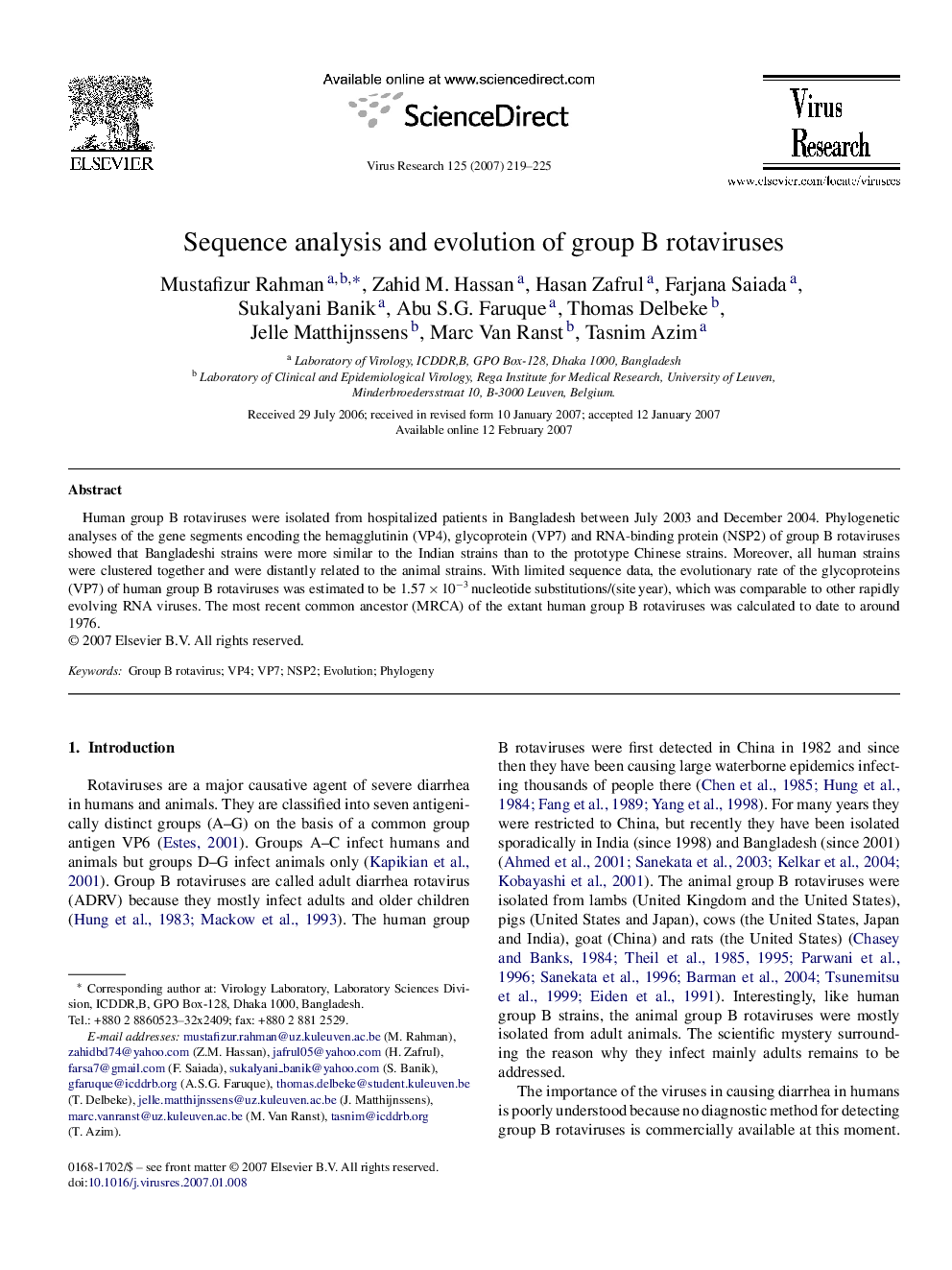| Article ID | Journal | Published Year | Pages | File Type |
|---|---|---|---|---|
| 3431034 | Virus Research | 2007 | 7 Pages |
Human group B rotaviruses were isolated from hospitalized patients in Bangladesh between July 2003 and December 2004. Phylogenetic analyses of the gene segments encoding the hemagglutinin (VP4), glycoprotein (VP7) and RNA-binding protein (NSP2) of group B rotaviruses showed that Bangladeshi strains were more similar to the Indian strains than to the prototype Chinese strains. Moreover, all human strains were clustered together and were distantly related to the animal strains. With limited sequence data, the evolutionary rate of the glycoproteins (VP7) of human group B rotaviruses was estimated to be 1.57 × 10−3 nucleotide substitutions/(site year), which was comparable to other rapidly evolving RNA viruses. The most recent common ancestor (MRCA) of the extant human group B rotaviruses was calculated to date to around 1976.
